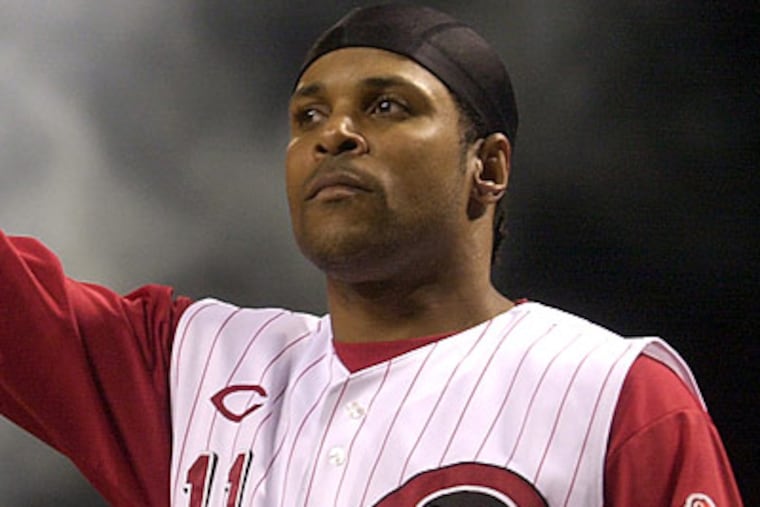LARKIN'S IN EASILY
BARRY LARKIN had no idea back in 1982 that he would become a baseball Hall of Famer thanks to Bo Schembechler.

BARRY LARKIN had no idea back in 1982 that he would become a baseball Hall of Famer thanks to Bo Schembechler.
A two-sport standout in his senior year of high school, Larkin went to the University of Michigan on a scholarship to play defensive back for Schembechler's Wolverines. When he arrived in Ann Arbor, Larkin learned he was being redshirted.
"I was a better football player than a baseball player at the time," Larkin said. "And that was influential because I just worked on my baseball talent, just that alone. And that was an eye-opener because I got so much better."
So much better that he was elected to the Hall of Fame yesterday with plenty of room to spare. The former Cincinnati Reds shortstop was chosen on 495 of 573 ballots (86 percent) in voting announced by the Baseball Writers' Association of America, well above the necessary 75 percent. Larkin was on the ballot for the third time after falling 75 votes short last year.
He will be inducted July 22 in Cooperstown, N.Y., along with the late Ron Santo, elected last month by the Veterans Committee.
"I'm just incredibly, incredibly moved by this whole experience and so humbled by the experience and so excited about being the newest member of the Hall of Fame," Larkin said on a conference call.
His election came in the final year before the Steroids Era becomes the main focus in balloting.
Barry Bonds, Roger Clemens, Sammy Sosa, Mike Piazza, Craig Biggio and Curt Schilling are eligible for the first time next year.
Jack Morris followed Larkin with 382 votes (67 percent), missing by 48 votes on his 13th try but up sharply from 54 percent last year. Morris, the ace of three World Series winners, finished with 254 victories and was the winningest pitcher of the 1980s. His 3.90 ERA, however, is higher than that of any Hall of Famer.
He has two chances left on the BBWAA ballot. Gil Hodges (63.4 percent in 1983) has the highest percentage among players who never gained election.
Playing from 1986 to 2004 - all with his hometown Reds - Larkin hit .295 with 198 home runs, 960 RBI, 2,340 hits and 379 stolen bases. A 12-time All-Star, he won the 1995 NL MVP award, nine Silver Slugger trophies and three Gold Gloves. He helped the Reds win the 1990 World Series and in 1996 became the first shortstop to have 30 homers and 30 steals in a season.
Larkin's brother Mike, who was a year older, was recruited by Schembechler but decided to follow coach Gerry Faust from Archbishop Moeller High School in Cincinnati to Notre Dame.
"So Bo told my mother that he was going to get her next son," Larkin said.
Larkin became a baseball star at Michigan, which retired his No. 16. He developed under coach Bud Middaugh and assistant Danny Hall, who is now Georgia Tech's coach.
"Those two guys really beat it in my head the correct way to play the game," Larkin said. "Because neither was a home-run hitter, neither one was one of the most gifted, if you will, they were both very good at the X's-and-O's, at the hitting behind the runner, at the mental part of the game."
Cincinnati, which drafted Larkin in the second round in 1982, took him with the fourth overall pick in 1985. Schembechler, who became president of the Detroit Tigers, used to kid Larkin about his career path.
"Bo always told me he would strike me out, anyway. That was Bo's way of saying, 'Congratulations, kid, you did it,' " Larkin said. "He would always tell me: 'You'll be back. You'll miss football. Nobody comes to the University of Michigan to play baseball,' is what he used to say."
With no big contenders among first-time eligibles, several holdovers saw increases from last year: Jeff Bagwell (42 percent to 56 percent), Lee Smith (45 to 51), Tim Raines (38 to 49), Alan Trammell (24 to 37) and Edgar Martinez (33 to 37).